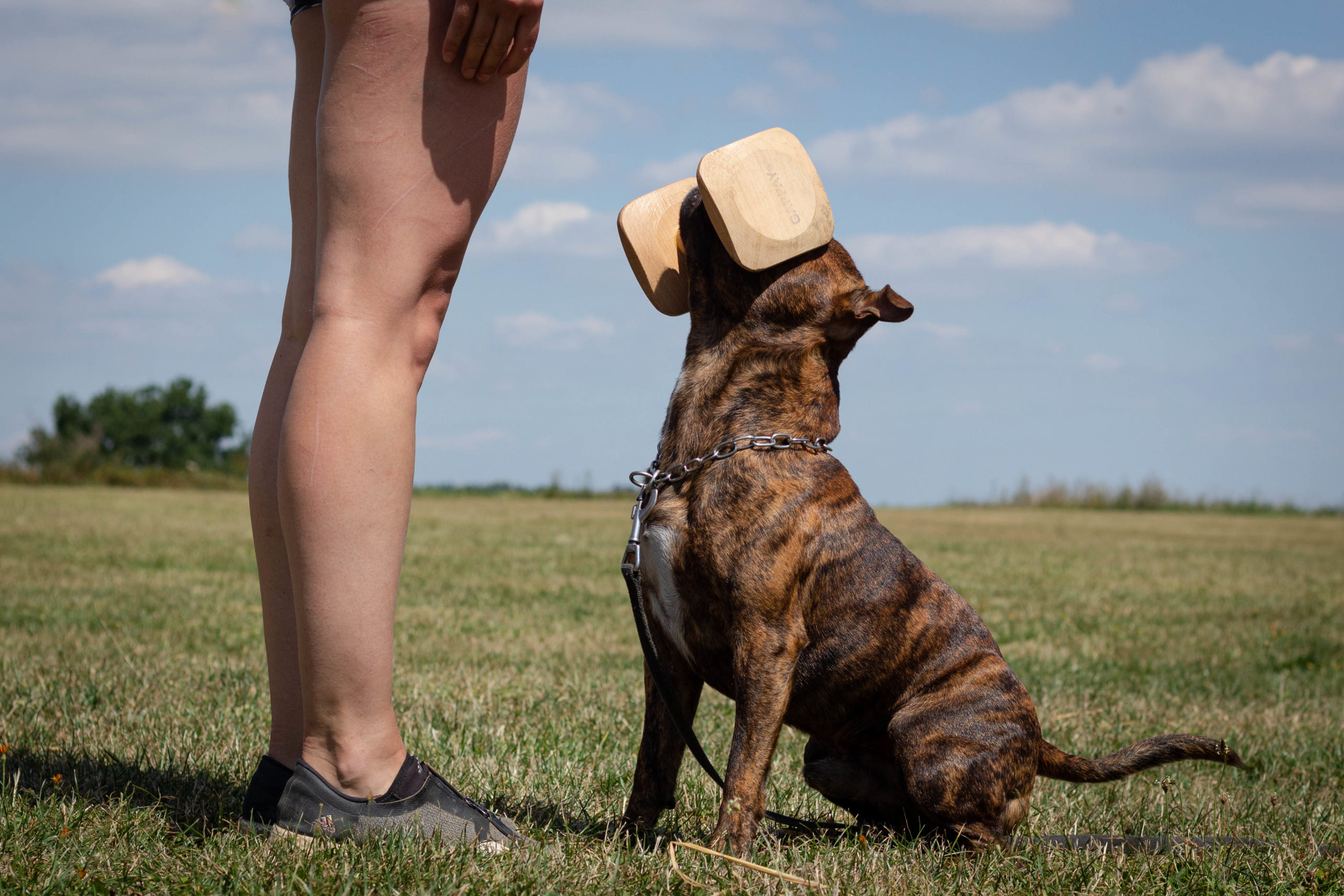
23 Srp Retrieve Components Overview – Part 1: Before the Throw
The dumbbell retrieve is a much more complex exercise than it seems at first glance. It is comprised of many smaller exercises that compliment or contradict each other. Being able to balance them out perfectly is what a good fetch is all about.
In this article series, I want to describe the different parts of the retrieve. We will go over how the ideal retrieve should look and point out what you should focus on. Today, we will start with everything that is going on before you even throw the dumbbell.
The dumbbell stand
To really have a complex view of the retrieve, you have to start with getting the dumbbell from the stand. Here, you should really try different approaches to the stand to discover what is best for your dog.
It is rarely a good idea to approach the dumbbell stand directly. Most dogs would find that uncomfortable and might break their heeling focus as you approach the stand. Usually, it is better to stop on the left side of it to “shield” your dog from it while you take the dumbbell.
There are, however, many other options for how to approach this. Try them out for yourself, and watch your dog’s reaction. I recommend you really think about this and figure out how to use the stand to your advantage. It is even possible to slightly correct an overexcited dog by demanding a sharp turn right at the stand. Be creative and adjust to your dog’s needs.
I recommend you also think about where your dog should be focused while you are taking the dumbbell. It is usually not penalized (with the exception of maybe extremely high-level competitions) when your dog does not focus upwards on you while you take the dumbbell from the stand. He must not change position and must remain in the basic position—that’s a given.
However, you can choose if you will demand an upwards focus from him even when reaching for the dumbbell or if you will let him look at the dumbbell as you take it and then refocus back on you. This very much depends on your dog.
For my little Finka, it was much more comfortable to look at the dumbbell as I took it, especially when it was a strange dumbbell that other dogs had had in their mouths before her, like at a competition. She would just look at it and reassure herself that it was a normal dumbbell, even though it smelled a bit funny. After that, she had no problems focusing back up on me and heeling.
Archer is a different story. Letting him look at the dumbbell is not a good idea at all. He can get a bit overexcited. He might squeal with joy because one of his favorite exercises is about to begin. He might even break the basic position to get a better look. So, with Archer, I trained a straight upward focus during this part. I don’t mind if he quickly glances at the stand to realize where we are, but other than that, he has to keep his head up.
Heeling with the dumbbell
The next sub exercise of the retrieve—one that is often overlooked by handlers but is very important—is heeling with the dumbbell. There are some trials where you heel a significant distance with various dumbbells (IGP 3 comes to mind), so this is something that should definitely be trained and not just skipped.
Holding a dumbbell in your right hand might have an effect on your dog’s heel. He might forge a bit. He might push forward. He might even break concentration and look at it from time to time. Another problem could be the dog slowing down in anticipation of stopping for throwing the dumbbell. As you can see, there are plenty of opportunities for him to make mistakes.
What I recommend is doing a dumbbell heeling training session from time to time to address this. I will just take the dumbbell at the beginning of the session and do all of my heeling (which I usually do at the start of the session) with the dumbbell in my hand. I will do about turns, changes of paces, even the group, all with the dumbbell in my hand.
I pay close attention to Archer’s heeling, correct mistakes, and reward as usual. This type of training makes the distance you have to heel from the stand to the line or obstacle and back a piece of cake for your dog.
Sometimes, there is a line drawn on the ground (usually at competitions). If that is the case, pay attention to stop your heel before the line. Neither you nor your dog should overstep the line. Let your dog sit next to you in the basic position, and usually, you will have to wait for the judge’s command to throw the dumbbell.
Next week, we will discuss all the intricacies of throwing the dumbbell and sending your dog away to get it. Please think about what you just read, and try integrating it into your training sessions. Be mindful and you will have a perfect retrieve in no time.
